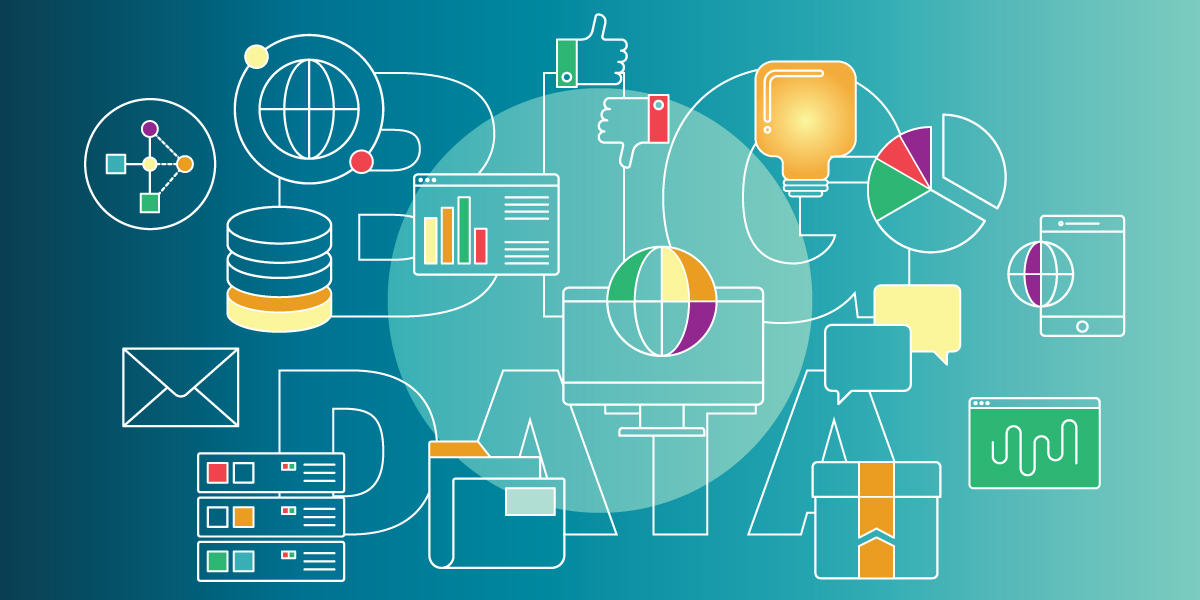If we look back just a few years ago, big data became a hot topic that brought discussions about the value, possibilities, strategies, approaches and investments to leverage the promise of its capabilities. Today, we are well aware that the data is valuable capital for companies and that every company generates a huge amount of data. Digital technologies brought us an enormous boost in data availability, waiting to be exploited for more precise reporting and analytics, better decision-making, personalized customer experience and reduced cost.
One of the big data statistics that caught our attention is that over 2.5 quintillion bytes of data are generated worldwide every day. With this in mind, we are sure that big data is the key to an amazing future full of innovations. Actually, our experience shows that innovation management and big data are best friends forever. But, let’s first understand what we mean when we say big data.
What is Big Data?
When we speak about big data, the main focus is on large, complex and diverse sets of information growing at ever-increasing rates. These large and complex data sets cannot be adequately processed and analyzed using traditional and typical data processing techniques. Basically, the term Big data is used when the amount of the data that an organization generates reaches a critical point that requires a new technological approach in terms of storage, processing, analyzing and usage. Machine learning and new techniques of statistics and analytics have been developed to deal specifically with big data.
Gartner defines Big data as high-volume, high-velocity, and/or high-variety information assets that require new forms of processing to enable enhanced decision making, insight discovery and process optimization. These three main criteria volume, velocity and variety were used to qualify a database as “big data”, known as the 3V’s. Yet, considering how data showed exponential growth, two new Vs have been added by Gartner to the data processing concept - Value and Veracity.
The 5 V’s of Big data
Volume refers to the “amount” or quantity of the data that is produced. The size of the data determines the value, and whether it can be considered as big data or not. The various sources of the data create different formats of data, structured and unstructured. Some data formats include spreadsheets, PDF’s and tons of reports, while others use social media data and analytics. More and more companies are utilizing real-time reports using different data formats to see a bigger picture and spot new possibilities.
Velocity refers to the speed at which the data is generated, collected and analyzed. It is the speed at which data is received and acted on. We all understand how different technologies are interconnected today and how data constantly flow through multiple channels such as our computer systems, mobile phones, social media, business application, etc. All this data can be captured and tracked in real-time, providing us with a solid ground for more accurate and timely decision-making.
Variety refers to the type and nature of data that are available, generated either by humans or by machines. The traditional database was structured and fits right into the relationship base, and big data is more related to the unstructured data types. Unstructured data types such as emails, voicemails, audio/video, etc, require advanced tools for processing. Variety is all about the ability to classify gathered data into various categories.
Value refers to data that can add “value” to the company. You can have endless amounts of data but, unless it can be turned into value, it is useless. And big data analytics can have a huge role here. How you proceed with collected data is what really matters. Advanced data analytics provide useful insights from collected data which will add significant value to the decision-making process.
Veracity refers to the assurance of the quality or credibility of the collected data. Think just how accurate your data are? When it comes to the accuracy of big data, it is not just the quality of the data itself but how trustworthy the data source, type, and processing of it actually is. Being highly complex, you cannot take big data as is without validating and analyzing it.
To summarize, big data represents large and complex data sets that are so voluminous that traditional data processing software just cannot manage and process them. On the other hand, this enormous data can be used to identify and address business problems, discover specific customers’ behaviors, detect trends and more.
How big data supports innovation management?
Whether we admit it or not, the digital transformation is forcing organizations to change towards more data-driven business models. And big data holds many answers to drive innovation with more success. These massive quantities of data can be used to address business problems you wouldn’t have been able to notice before. Constantly analyzing big data will enable you to make more educated decisions, develop better products and produce them more efficiently.
Utilizing big data analytics in your innovation process will result in:
- A more holistic overview of the innovation process
- A more precise and accurate reporting
- A more educated decision-making
- A more personalized customer experience
- Early recognition of trends
- Cost reduction
Data-driven innovation suggests that innovation processes could and should be automated. More and more data becomes available every day, technological and analytical capabilities are increasing and data-processing costs are decreasing. Utilizing innovation management software and connecting to the vast volumes of different data will produce a more holistic view, leading to informed, data-driven decisions and more agile innovation processes.






